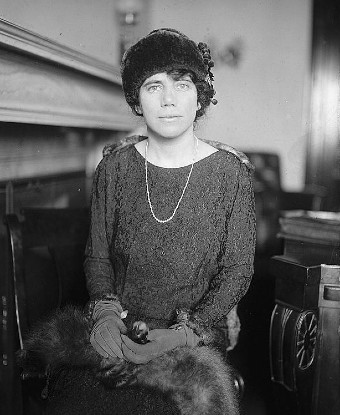Last updated: February 13, 2025
Person
Esther Lape

U.S. Fish and Wildlife Service Photo
Esther Lape was born in Wilmington, Delaware, on October 8, 1881. A graduate of Wellesley College, Esther Lape taught English at Swarthmore College in Pennsylvania, the University of Arizona, and Barnard College in New York City. She was well known as a journalist, researcher, and publicist. Lape was also associated with the Women's Trade Union League and one of the founders of the League of Women Voters. Her life-partner was the scholar and lawyer, Elizabeth Read, who was Eleanor Roosevelt's personal attorney and financial advisor. Together Read and Lape published the journal City, State and Nation.
It was through Read that Roosevelt met Lape and a professional relationship between Lape, Read, and Roosevelt was established in 1920. The relationship sprang from Roosevelt's work as the director of the League of Women Voters' national legislation committee. In this capacity, Roosevelt was aided by weekly meetings with Read. During these meetings, Read would provide Roosevelt a marked-up copy of the Congressional Record and together they discussed possible league activities.
Later in 1921, the three women became close friends, meeting several evenings a week in Greenwich Village as part of the New Women movement, which focused on political power and economic change. In 1923, working with Roosevelt, Lape administered the competition for the Bok Peace Prize. From this work, Lape published twenty of the most interesting proposals from the competition and wrote an introductory analysis. Lape's analysis received great praise. However, in January 1924, the Senate began investigating charges that the Bok Peace Prize was the tool of "foreign governments or foreign institutions." Lape testified before the Senate and identified Roosevelt and Narcissa Vanderlip as two of the most influential members of the selection committee. The hearings were suspended because of President Wilson's death and never brought up again. Throughout the 1920s, Lape continued to work in international affairs, in particular in support of U.S. participation in the World Court.
During the 1930s, Lape and Roosevelt conferred regularly on political issues, including U.S. recognition of the Soviet Union and the failure of the 1935 Social Security Act to address health care. World War II pulled health care issues away from the forefront of both the administration and the Congress. Yet, Lape continued her crusade for better health care and in 1955 wrote Medical Research: A Midcentury Survey. This work was sponsored by the American Foundation, when Roosevelt was a board member.
Together, Read, Lape, and Roosevelt would remain not only dedicated to political issues but stalwart friends, as well. As first lady, Roosevelt rented a small apartment in a building owned by Lape and Read in Greenwich Village. Roosevelt used this apartment to escape the pressures of her public position and in order to spend time with her friends. Lape and Read also owned a country home in Westbrook, Connecticut, known as Salt Meadow (today part of the U.S. Fish and Wildlife Service). Roosevelt also spent time there as well, often writing her "My Day" column.
After Read's death in 1943, Roosevelt remained friends with Lape and visited her often up until Roosevelt's own death in 1962. In 1965 Lape, along with others, asked the Nobel Committee to consider posthumously awarding Eleanor Roosevelt the Peace Prize. However, the prize that year went to UNICEF. In her later years, Lape served as a source of information for Joseph Lash's biographies on Roosevelt. Lape died on May 17, 1981 in New York City.
Article courtesy of the Eleanor Roosevelt Papers Project, George Washington University.
